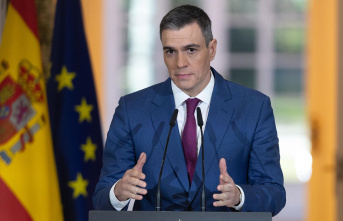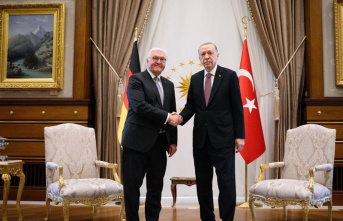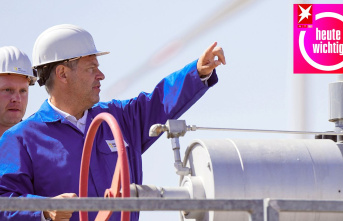The federal government is fiercely arguing about the next relief package because of the high prices - the aid that has already been decided has not even been paid out in full. In September, millions of employees receive a state cash injection. But how much is really left of the 300 euros energy price flat rate? Can it even begin to offset the price increases? And what about the many millions of Germans who are unemployed?
As early as March - the Russian war in Ukraine was just a month old - the traffic light coalition of SPD, Greens and FDP decided on the one-off payment. According to coalition circles, the money would simply have been paid out to everyone. But there is no easy way to do this, because not everyone pays taxes or can be reached by the state in another way. So there was a compromise: Employees get the money with the pay slip from the employer. It is now officially said that the money should "relieve those sections of the population who typically incur travel expenses in connection with their income generation" - who therefore travel to work by car or train and therefore have higher costs.
How exactly does the energy price flat rate work?
Everyone who lives and works in Germany or who commutes across the border is entitled to the 300 euros: employees, trainees, civil servants, soldiers, board members, mini-jobbers or temporary workers. Employees in semi-retirement also get money. The lump sum is usually paid with the September salary. For the self-employed, the advance tax payment from September 10 will be reduced. Anyone who was still employed at the beginning of the year but is now unemployed will receive the money without a special application via their tax return.
Why do you have to pay taxes on it?
The 300 euros are paid gross. Wage and income tax are deducted, but no social security contributions. In this way, the traffic light wants to achieve social differentiation: people with low incomes get more money than top earners.
How much is left for whom?
On average 193 euros, says the Ministry of Finance. Only employees whose taxable income remains below the basic allowance of around 10,000 euros will receive the full 300 euros. In the case of top earners, on the other hand, according to the calculations of the taxpayers' association, only around 180 euros remain - for example singles with tax class 1 and 72,000 euros an annual salary. Anyone who pays the tax rate for the wealthy because of their high income gets even less out of it.
A married employee with a child, tax class 4 and an annual salary of EUR 45,000 receives a flat rate of EUR 216.33. With an annual salary of EUR 15,000, the same employee would receive EUR 248.83. If he is in tax class 3, he stays under the basic allowance and gets the full 300 euros.
Who gets nothing?
Anyone who has no taxable income. Above all, many pensioners, but also students - if they don't have at least one mini-job. You have to be careful who, for example, lets your own children hire you as a babysitter pro forma. The prerequisite for the lump sum is that such an employment relationship is "seriously agreed and actually carried out in accordance with the agreement," it says.
The Federal Working Group for Debt Counseling fears that the lump sum will be taken away directly from over-indebted people if their wages or accounts are garnished. The Ministry of Finance makes it clear: the lump sum is not affected by a garnishment of wages, since it is not legally a wage. There was initially no information on account seizures.
Is there a risk that some will collect twice?
This could happen to people who are employed and work freelance on the side - but they are not allowed to keep double the flat rate. In such cases, the tax office should take corrective action. In addition, mini-jobbers must confirm to their employer that this is their first employment relationship.
How much does all this cost the federal government?
According to official information, the lump sum itself generates costs of 13.8 billion euros. However, the state also collects 3.4 billion euros from the fact that the employees pay wage and income tax on top of the lump sum and, in some cases, a solidarity surcharge. The bottom line is that costs remain at 10.4 billion euros.
Is there enough money to offset the price increase?
No, that's clear now. Gas, electricity and fuel prices have exploded in recent months. For electricity alone, the comparison portal Verivox counted 123 price increases from basic suppliers for August, September and October, which means annual additional costs of more than 300 euros for an average 3-person household. In the case of gas, the increases are even more juicy, plus the state gas surcharge.
What else is planned then?
The federal government is working on another relief package, from which, according to Chancellor Olaf Scholz (SPD), pensioners should also benefit. In government circles, however, one expects that this bundle will not be quite as lavish as the last one with one-off payments, a 9-euro ticket and tax cuts. It is likely that targeted population groups with little money will be relieved. Finance Minister Christian Lindner (FDP) is planning a tax reform for the coming year from which all taxpayers should benefit.












